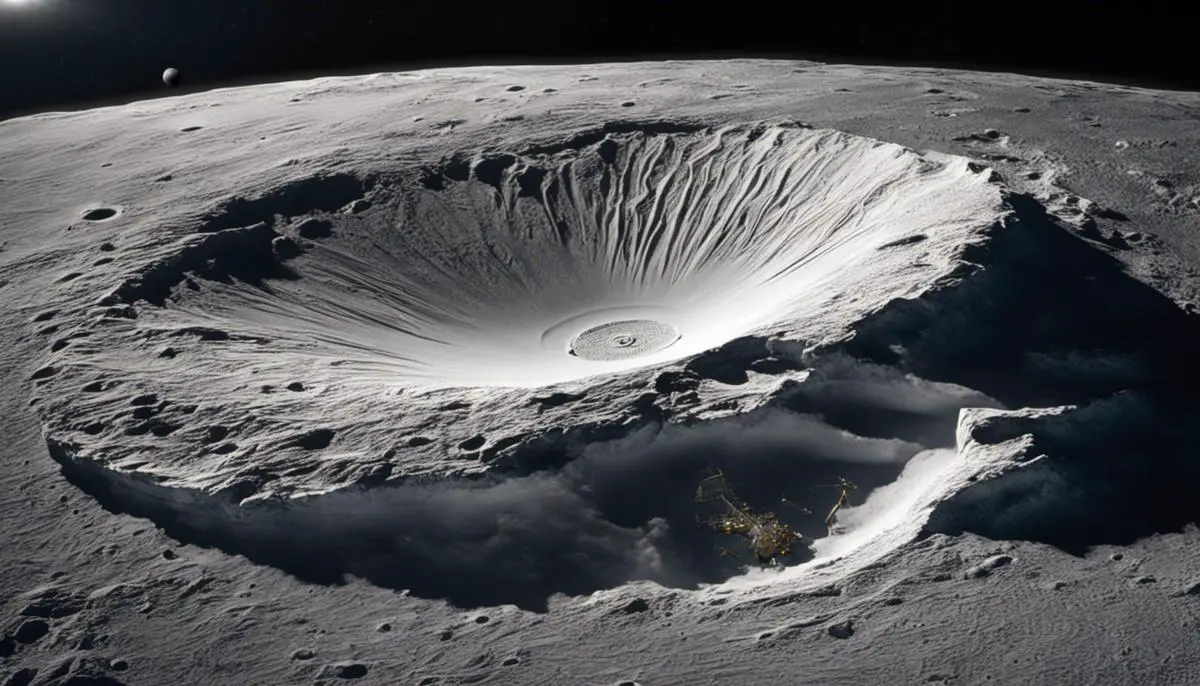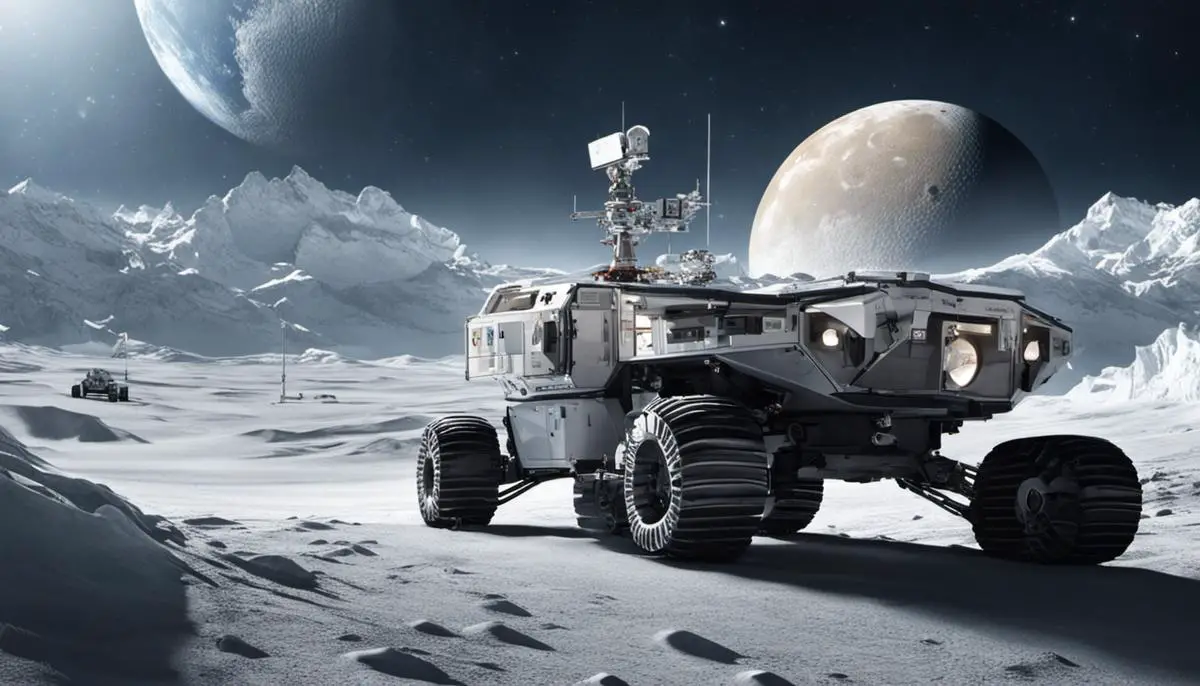As humanity continues its journey into the cosmos, few locations have sparked as much intrigue and potential promise as the lunar south pole. Nestled in the moon’s southernmost region, it represents a beacon of unparalleled opportunity and formidable challenges. The significance of this polar terrain extends beyond its craters, serving as a unique junction for scientific research, understanding astronomical phenomena, and fostering the ambitious notion of human habitation beyond Earth. But the path to unlocking its secrets is riddled with complexities ranging from treacherous terrain to technological constraints, making exploration a fascinating yet formidable endeavor.
Significance of the Lunar South Pole
Significance of the Lunar South Pole in Space Exploration
The Lunar South Pole, located in Moon’s southern region, has been earmarked by experts as a strategic destination for future space missions. This location holds unique implications for space exploration due to its continuous access to sunlight, which can provide solar power to probes or manned missions. Additionally, the near constant sun exposure is beneficial to lunar telescopes – free from atmospheric distortion and light pollution, the Lunar South Pole offers an unrivaled view of the cosmos. The shadows of deep craters in this region, never touched by sunlight, also cold-trap water ice and volatile compounds that can be exploited as propellant resources for deep-space missions.Role of Lunar South Pole in Scientific Research
Scientists are particularly interested in the Lunar South Pole for its unique lighting and geological conditions. The South Pole’s consistent sunlight offers the chance to explore new solar power technologies, which are essential for powering spacecraft and future Moon bases. The cold traps are also home to lunar regolith which, through isotopic analysis, can provide insight into the Moon’s origin and the early history of the solar system. By studying the preserved record within the Lunar South Pole, scientists can get a glimpse into the solar system’s evolution, including how life on Earth might have originated. The ambient environment also offers a natural laboratory for conducting low-temperature science. Analysis of the Lunar South Pole’s terrain also helps formulate critical data to aid rovers and astronauts in navigating the Moon’s surface and promoting safety during exploration.The Potential for Permanent Settlement at the Lunar South Pole
The likelihood of long-term habitation at the Lunar South Pole stems from its remarkable advantages, including constant sunlight exposure and probable water reserves. With virtually uninterrupted sunshine, the Lunar South Pole offers dependable solar power and a relatively stable environment with consistent surface temperatures, thereby making it a plausible location for humans to take root. Moreover, water reserves, possibly concealed within its dark craters, could be a game-changer for prolonged lunar residency by providing the necessary resources like drinking water and breathable oxygen. This unearthed water could further be converted into rocket fuel, thereby setting the stage for the Moon to function as a crucial pit stop for fuel resupply, aiding superior deep space exploration. To sum up, the overarching potential of the Lunar South Pole for scientific research, space exploration, and eventually, human settlement, is quite phenomenal. This area is all set to generate the fundamental resources that manned missions require for substantial and continued lunar exploration, marking it as a cracking launchpad for humanity’s journey into the unknown realms of deep space.
Challenges in Lunar South Pole Exploration
The Unique Landscape and Weather Conditions of the Lunar South Pole
The impeccable feasibility of South Pole exploration is marred by certain challenges, primarily due to the harshness of its terrain. The varied landscape, marked by rugged highlands and deep craters, pose notable hindrances for rover mobility. Notable obstacles like the Shackleton Crater, spanning over 20 kilometers in diameter and plunging four kilometers deep, challenge both the landing of spacecrafts and the navigation of rovers. Furthermore, the terrain is blanketed by a thick layer of lunar dust or regolith, reducing vehicle traction and potentially affecting the performance of scientific instruments.
The lunar ‘weather’ too, adds to the adversities. While the Moon doesn’t experience conventional weather given its lack of an atmosphere, it endures considerable temperature variations. The South Pole, largely engulfed in darkness save faint sunlight gracing the jagged horizon for brief periods, experiences bone-chilling temperatures, plummeting from about -230 to -170 degrees Celsius.
Extreme Temperature Conditions and Radiation Exposure
At the lunar South Pole, missions will contend with extreme cold that can potentially impact the functioning of onboard instruments and technologies. The longevity of batteries, for example, tends to be reduced at such low temperatures. The electronics and other systems used in exploration equipment need to be robust enough to withstand these harsh conditions.
Another obstacle faced at the South Pole is radiation exposure. The lunar surface, exposed to solar and cosmic radiation, is a harsh environment for robotic technologies, let alone potential human explorers. The development of radiation-hardened equipment and potential countermeasures for human safety will be crucial for successful outcomes in lunar South Pole explorations.
Technological and Logistical Hurdles
Running missions to the Lunar South Pole require significant technological advancements. Challenges include the development of advanced lunar rovers with navigation systems adapted to the rough terrain and harsh conditions. Designing systems that can withstand the extreme cold and operate in near perpetual darkness is another challenge faced while exploring the lunar South Pole.
Logistic hurdles include launching and landing spacecraft at the South Pole, establishing communication with the Lander/Rover as the Earth will not be in the line of sight, and managing the longevity of the mission in the extreme cold. Appropriate mission planning and real-time troubleshooting are needed to mitigate these risks and ensure mission success.
Resource Extraction and Utilization
The tantalizing possibility of water ice deposits within permanently shadowed regions of the lunar south pole presents yet another challenge. The extraction of this resource for potential life support, power generation, and rocket fuel production entails the development of novel extraction techniques suitable for the lunar environment. Understanding the characteristics of the lunar regolith and designing technologies to excavate, process, and store these resources is a complex task that researchers worldwide are currently tackling.
Preparing for Lunar South Pole Habitation
As we gear up to deploy human explorers to the Lunar South Pole, the establishment of a habitable environment remains our main objective. The key parameters to secure include temperature, air pressure, and sufficient protection against radiation. Beyond just survival, the challenge includes maintaining a reasonable quality of life; affording opportunities for physical fitness, social interaction, and mental stability within the constrained parameters. As you can imagine, this presents a substantial challenge and calls for both resourceful engineering and a deep understanding of human resilience.

Past and Ongoing Missions
A Retrospective on Past Lunar South Pole Expeditions
The race to unmask the mysteries of the Lunar South Pole dates back to the early days of space exploration. Among the front runners was NASA’s Lunar Prospector that took to the moon’s orbit in 1998 and ’99, revealing traces of a high hydrogen concentration that hinted at the existence of water ice in perpetually shaded regions.
Journeying forward to 2008, the Indian Space Research Organisation outdid itself with their Chandrayaan-1 spacecraft. Besides charting the terrain of the Lunar South Pole, the mission heralded a major revelation: it tracked down water molecules on the moon’s surface, painting a revamped perspective of the lunar south pole.
Building on these discoveries, NASA’s Lunar Crater Observation and Sensing Satellite (LCROSS) suggested in 2009 that the moon’s craters, shrouded in perpetual shade, were wellsprings of valuable resources. Moreover, LCROSS detected a water cycle and diverse chemical activity. Of note was the presence of water in Cabeus, a permanently shadowed lunar crater near the moon’s south pole.
Ongoing Missions: Exploration and Research Continues
The lunar south pole continues to be the focus for many space agencies. NASA is planning to land astronauts at the south pole for the Artemis mission, slated for 2024. The objectives of this mission include demonstrating new technologies, capabilities, and business approaches needed for future exploration.
In 2019, the Beresheet lander, launched by Israeli non-profit SpaceIL, was to land in Mare Serenitatis, a large, ancient volcanic basin widely believed to house significant amounts of water ice. Unfortunately, the mission failed to complete a successful landing, but future attempts are expected.
The China National Space Administration (CNSA) launched the Chang’e-4 mission, including a rover called Yutu-2, in 2018. It successfully landed in the Von Kármán crater in the South Pole-Aitken Basin, on the far side of the moon. The mission has made important findings, including the discovery of a strange gel-like substance and potential evidence for material from the moon’s mantle at the surface.
Understanding the Importance of the Lunar South Pole
Scientists have expressed a heightened interest in the lunar south pole due to its consistently shadowy regions, thought to be undisturbed for billions of years. It is held that these untouched areas may have trapped volatile substances over this expansive timeframe, including highly treasured ice water, a critical resource for extended space explorations.
On top of this, the lunar south pole skilfully combines the advantages of shadow and sunlight. While undulating mountains capture nearly constant sunlight providing a prime location for solar energy collection, the encompassing craters remain submerged in darkness. This means advantageous sites, near lofty peaks, can enjoy the benefits of sustained power generation while maintaining access to the darker regions likely rich in water ice. These factors, combined, render it as a key candidate for future human missions and potential lunar inhabitation.

Future Plans and Missions
A Look at NASA’s Ambitious Artemis Program
Building upon the potential that the explored lunar South Pole holds, NASA plans on blazing a new trail with their Artemis program by initiating a fresh era for lunar research. The program, targeting 2024, ambitiously aims to land astronauts, including a woman, on this lunar South Pole. The mission’s end goal isn’t just limited to this exploration; it aims to develop and test new technologies, strategies, and conduct on-ground practical studies for possible human exploration of Mars in the future. An integral draw towards the lunar South Pole for this mission is the presence of water ice, essential for prolonged space exploration, and the abundant nearly perpetual sunlight, ideal for harnessing solar power.
China’s Chang’e Missions
China too, has vested interest in the lunar South Pole. After the successful mission of Chang’e-4 to the moon’s far side, the national space agency aims to launch Chang’e-6, Chang’e-7, and Chang’e-8 missions that have objectives centered around the lunar South Pole. These missions will conduct comprehensive surveys around the South Pole, including its landscape, material composition, and internal structures. In addition to the scientific objectives, these planned missions also seek to test technologies for building a lunar scientific research station, heralding an era of lunar colonization.
India’s Lunar Plans
Meanwhile, the Indian Space Research Organisation (ISRO) has planned the launch of Chandrayaan-3 in 2022, aimed to land a rover near the lunar South Pole. This mission will focus more on robust landing technologies rather than scientific exploration. This is particularly crucial to India since their previous mission, Chandrayaan-2, faltered in the landing stage. With the launch of Chandrayaan-3, ISRO aims to enhance its technological capability to soft-land on the lunar surface.
European Space Agency (ESA)’s Prospective Missions
The ESA has expressed its intention to join the lunar South Pole exploration with their future mission Luna-27, planned for launch in the mid-2020s. The mission aims at landing a spacecraft near the lunar South Pole and drilling the regolith to extract and analyze samples for volatile substances, including water ice.
There is a growing shared interest among international space organizations in investigating, comprehending and perhaps establishing a human presence on the lunar South Pole. The endeavors planned for this particular region of the moon could potentially result in significant advances in our understanding of lunar conditions and greatly broaden the prospects for long-term human habitation.

Potential for Human Settlement
The Potential for Sustaining Life
Of the many locations on the moon, the lunar South Pole stands out as perhaps the most promising for sustainable human living, thanks to a number of remarkable characteristics. Chief among these is the presence of water ice in craters that never see sunlight, a resource that could serve a number of life-sustaining purposes, from supplying drinking water to being hydrolyzed to create breathable oxygen or even turned into fuel for spacecraft. What’s more, the lunar South Pole is home to a network of lava tubes, which could serve as a natural protective layer against the harmful radiation that poses a significant obstacle to extended human space exploration and colonization. Additionally, the fact that certain areas of the South Pole receive near-constant sunlight could support the continuous generation of solar power, reducing dependency on limited energy storage and underpinning the life-support systems of any potential habitats.
Availability of Resources
Resource-wise, the lunar south pole boasts significant amounts of Helium-3, a non-radioactive isotopic resource ideal for nuclear fusion – a potential source of safe, clean, and virtually limitless energy. Additionally, the Moon’s regolith, the layer of loose, fragmented material covering solid bedrock, inherently contains useful raw materials such as iron, aluminium, and silicon. These resources could be extracted and utilized to manufacture tools, structures, and potentially even the components needed to build a lunar-based infrastructure, significantly reduced dependence on Earth-based supply missions.
Temperatures and Meteorological Conditions
However, the unique geographical challenges at the lunar south pole also must be considered. The area experiences extreme temperatures, spanning from surges of heat to chillingly cold, well below freezing point in shadowed areas. Also, handling lunar dust, which is electrically charged and adheres to nearly everything, could pose consistent technical challenges to machinery, equipment, and human health if improperly managed.
Future of Space Exploration
Human settlement at the lunar south pole doesn’t merely signify a milestone for human space exploration but also effectively serves as a stepping stone for farther voyages. Having a stable outpost on the Moon would provide an invaluable opportunity for researching the health effects of living in low gravity over extended periods. Moreover, it could act as a launchpad to Mars and beyond – the lower gravity on the Moon requiring much less energy to escape its gravitational pull compared to Earth. Given the Moon’s proximity to Earth, it would also allow more frequent and efficient testing and development of technologies for deep space survival and exploration. In the bigger picture, lunar colonization could also serve as a safety net in preserving human civilization against potential global catastrophes.

Photo by kedardutt on Unsplash
As we approach the horizon of a new era, the lunar south pole represents a critical crossroad. The capacity for human settlement on the moon is not merely science fiction; rather, it’s an evolving narrative where fact and imagination meet. The availability of life-supporting conditions and resources within this lunar realm could potentially reshape our future in space, paving the way for a sustainable human presence. The lunar south pole is not only a destination in our cosmic journey; it is a transition toward a future that expands our home beyond the blue skies of Earth, propelling us into the endless expanse of space with optimism and anticipation.
![]()
